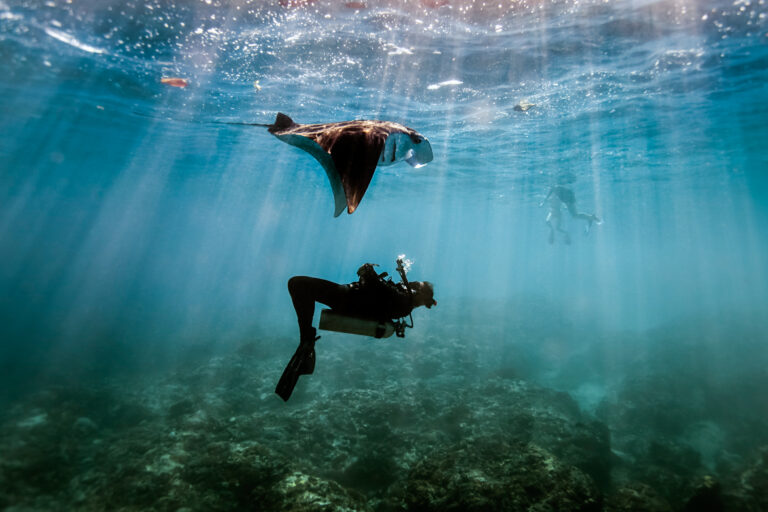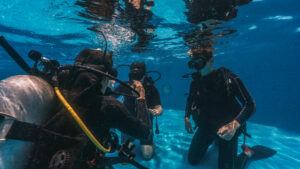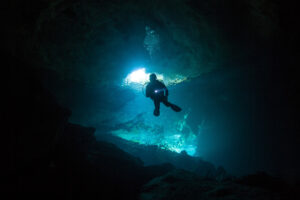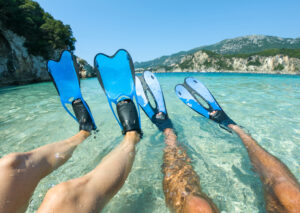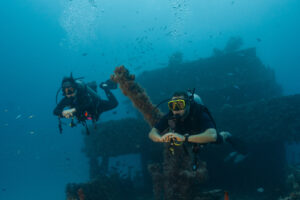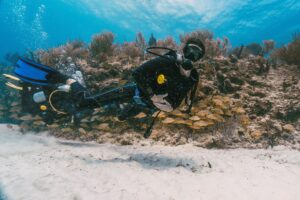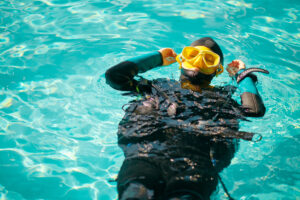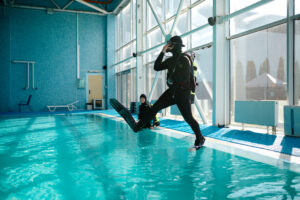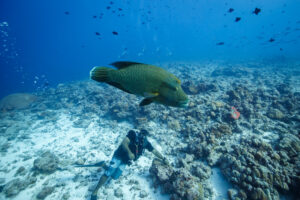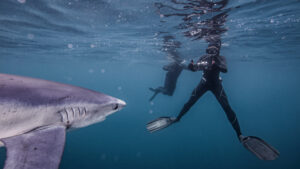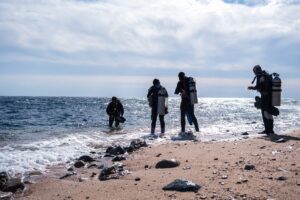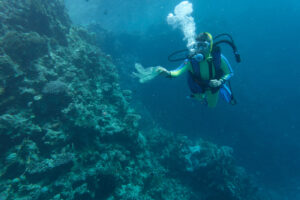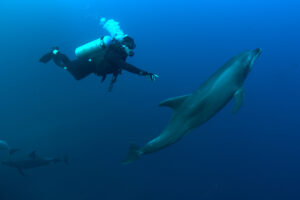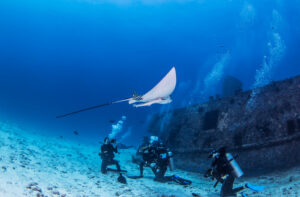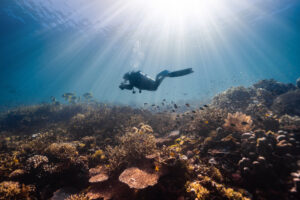What is Open Water Diving?
Open water diving is a fundamental form of recreational scuba diving, characterized by diving in natural bodies of water such as oceans, seas, and lakes. Unlike confined water diving, which takes place in controlled environments like swimming pools, open water diving offers divers the opportunity to experience the vastness and diversity of underwater ecosystems. This type of diving typically involves greater depths and more variable conditions, making it both a thrilling and challenging pursuit for enthusiasts of all levels. The concept of open water diving is integral to the sport, providing the foundation for various specialized diving activities and advanced certifications.
History of Open Water Diving
The practice of open water diving has a rich history, dating back to ancient times when humans first sought to explore beneath the water’s surface. Early divers utilized rudimentary techniques and equipment, such as breath-hold diving and primitive diving bells. However, it wasn’t until the 20th century that significant advancements were made, transforming diving into the popular recreational activity it is today.
One of the pivotal moments in the history of open water diving was the development of the self-contained underwater breathing apparatus (scuba) by Jacques-Yves Cousteau and Émile Gagnan in 1943. Their invention, the Aqua-Lung, allowed divers to breathe underwater for extended periods, revolutionizing underwater exploration. This breakthrough led to the establishment of recreational diving as a viable and safe activity, paving the way for the creation of diving schools and certification agencies.
Organizations such as the Professional Association of Diving Instructors (PADI) and the National Association of Underwater Instructors (NAUI) played crucial roles in popularizing open water diving. These organizations developed standardized training programs and certification processes, ensuring that divers had the necessary skills and knowledge to dive safely. The growth of these organizations and the increasing accessibility of diving equipment contributed to the widespread popularity of open water diving in the latter half of the 20th century.
Equipment and Preparation
Successful and safe open water diving relies heavily on the use of specialized equipment. Essential gear includes a wetsuit, which provides thermal protection and buoyancy, and a scuba tank filled with compressed air. Regulators are attached to the tank, allowing divers to breathe the air safely. Masks and fins are also vital components, enabling clear vision and efficient movement underwater.
In addition to the basic gear, several safety devices are crucial for open water diving. Buoyancy control devices (BCDs) help divers maintain neutral buoyancy, making it easier to navigate and conserve energy. Dive computers are used to monitor depth, time, and decompression status, reducing the risk of decompression sickness. Safety stops, typically conducted at a depth of 5 meters (16.4 feet) during ascent, allow excess nitrogen to be safely released from the body.
Preparation for an open water dive involves more than just gathering equipment. Divers must ensure they are physically fit and have undergone proper training. Certification courses, such as the PADI Open Water Diver course, provide comprehensive instruction on diving techniques, safety procedures, and environmental awareness. Proper planning is also essential, including assessing dive sites, understanding local conditions, and creating dive plans that include depth limits and time constraints.
Techniques and Skills
Open water diving requires a diverse set of skills and techniques to ensure safety and enjoyment. One of the fundamental skills is buoyancy control, which allows divers to maintain a stable position in the water column. Proper buoyancy reduces the effort required to move and prevents damage to the delicate marine environment. Techniques such as breath control and using the BCD effectively are taught during certification courses to help divers achieve this balance.
Navigation is another critical skill in open water diving. Divers often rely on compasses, natural landmarks, and dive site maps to orient themselves underwater. Understanding how to read and use these tools ensures that divers can safely navigate back to their entry point or boat. Additionally, learning to communicate effectively with hand signals is essential, as verbal communication is not possible underwater.
Advanced techniques, such as deep diving and night diving, introduce new challenges and require additional training. Deep diving involves descending beyond 18 meters (60 feet), where increased pressure and reduced light present unique considerations. Night diving, on the other hand, offers a completely different experience, with divers exploring underwater environments illuminated by dive lights. Both types of diving require enhanced skills in navigation, buoyancy control, and situational awareness to manage the increased risks and complexities.
Types of Open Water Dives
Open water dives can be broadly categorized into shore dives and boat dives, each offering distinct experiences and logistical considerations. Shore dives begin and end at the shoreline, allowing divers to enter the water directly from the beach or rocky coast. These dives are often more accessible and require less equipment than boat dives, making them ideal for beginners. However, shore dives can be influenced by tidal movements and surf conditions, which must be carefully evaluated before diving.
Boat dives, in contrast, involve traveling to dive sites that are not accessible from the shore. Dive boats are equipped with facilities for gearing up, entering the water, and exiting safely. Boat dives provide access to a wider range of sites, including remote reefs, shipwrecks, and deeper locations. The logistics of boat diving, such as coordinating with a dive operator and adhering to boat schedules, add an extra layer of planning but open up a world of diverse underwater environments.
The environment in which a dive takes place also significantly influences the experience. Coral reefs, kelp forests, and shipwrecks are popular dive sites, each offering unique attractions and challenges. Coral reefs, with their vibrant marine life and complex structures, are among the most sought-after sites. Kelp forests, found in colder waters, provide a surreal underwater landscape with towering kelp fronds. Shipwrecks, often teeming with marine life, offer a glimpse into history and require careful navigation and penetration techniques.
Environmental Considerations and Conservation
The impact of open water diving on marine ecosystems is a critical consideration for all divers. While diving offers an unparalleled opportunity to observe and appreciate underwater life, it also carries the potential for harm. Contact with coral reefs can cause damage to these delicate structures, and careless behavior can disturb marine life. Therefore, practicing responsible diving is essential to minimize negative impacts on the environment.
Divers play a crucial role in ocean conservation efforts. By participating in activities such as underwater clean-ups and reporting sightings of endangered species, divers contribute to the protection and preservation of marine ecosystems. Many diving organizations promote eco-friendly practices and encourage divers to support marine conservation initiatives. Adhering to the principles of “leave no trace” and respecting wildlife ensures that future generations can enjoy the beauty of the underwater world.
Best practices for eco-friendly diving include maintaining proper buoyancy to avoid contact with the seabed, using reef-safe sunscreen, and refraining from touching or collecting marine organisms. Additionally, divers are encouraged to support sustainable tourism practices and choose operators that prioritize environmental protection. By embracing these practices, divers can enjoy their adventures while actively contributing to the health of our oceans.
Health and Safety Concerns
Health and safety are paramount in open water diving. Understanding and managing the risks associated with diving is essential to ensure a safe and enjoyable experience. One of the primary risks is decompression sickness, also known as “the bends,” which occurs when nitrogen absorbed during a dive forms bubbles in the bloodstream due to rapid ascent. Adhering to safe ascent rates and conducting safety stops can significantly reduce this risk.
Nitrogen narcosis, another potential hazard, affects divers at greater depths, causing a state of altered consciousness similar to intoxication. Recognizing the symptoms and responding appropriately, such as ascending to shallower depths, is crucial for safety. The importance of the buddy system cannot be overstated, as diving with a partner enhances safety by providing mutual support and assistance in emergencies.
Regulations and guidelines established by certification agencies and local authorities are designed to ensure safe diving practices. These include limits on depth and duration based on certification levels, requirements for medical fitness, and adherence to standardized training. Emergency preparedness, including knowledge of first aid and access to emergency oxygen, is also vital. By following these protocols and continually updating their skills, divers can minimize risks and enjoy the wonders of open water diving safely.
Key Takeaways
Open water diving offers a unique and exhilarating opportunity to explore the underwater world. With proper equipment, training, and respect for marine environments, divers can safely experience the beauty and diversity of natural bodies of water. Understanding the history, techniques, and environmental considerations of open water diving enriches the experience and highlights the importance of responsible practices. As divers continue to embrace this activity, the balance between adventure and conservation remains crucial for the future of our oceans.

